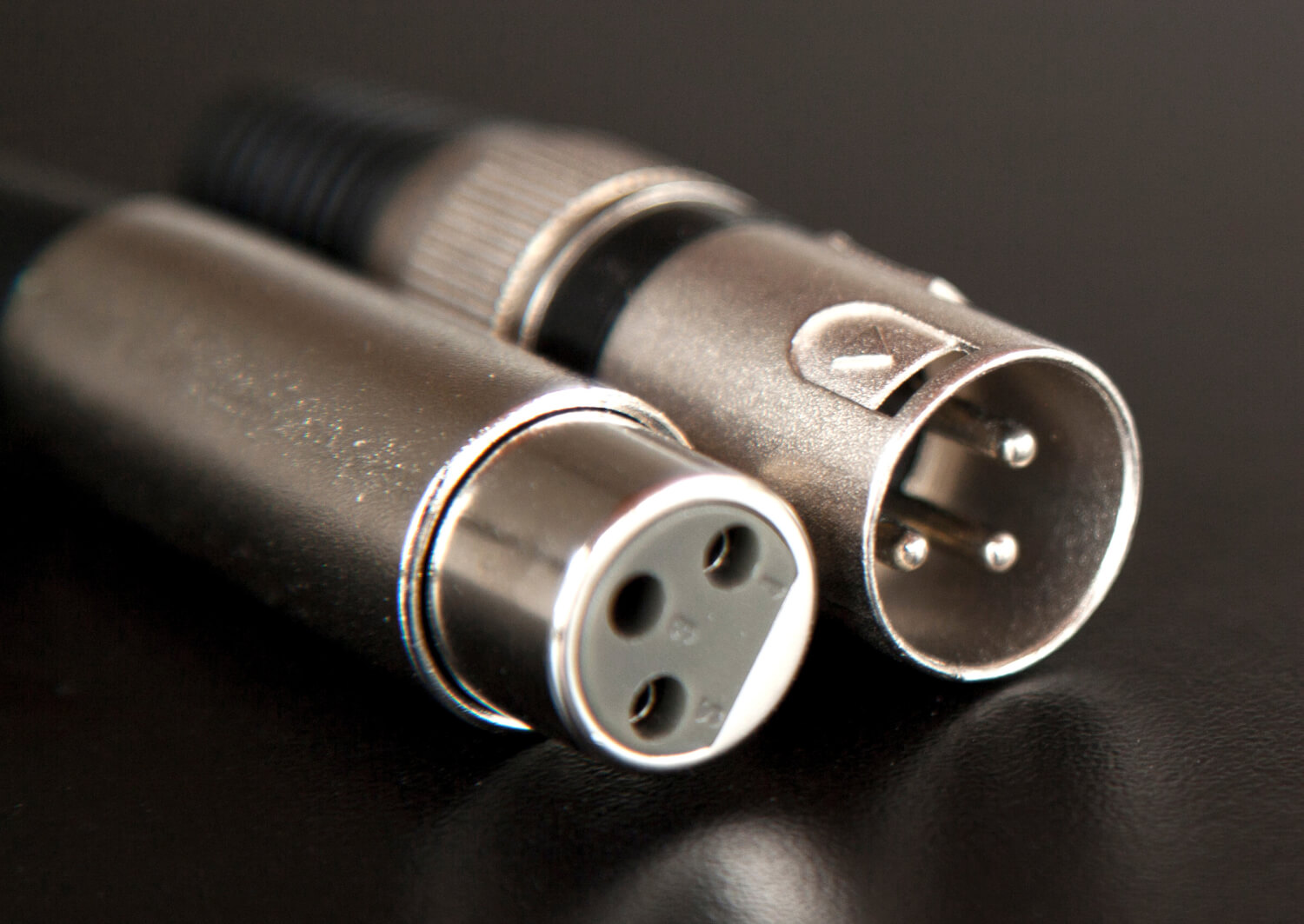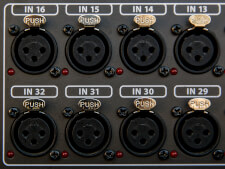XLR
Stands for "External Line Return."
XLR is a type of connector commonly used in audio production. A standard XLR plug has three pins (as shown in the image below), which provide a balanced analog audio signal, reducing interference and noise. Most stage microphones have an XLR connector, which is why XLR cables are often called "mic cables."
The three pins of an XLR cable include two signal wires and one ground.
- Pin 1: Ground (shield) - protects the signal from external interference
- Pin 2: Positive (hot) - carries the original audio signal
- Pin 3: Negative (cold) - carries an inverted (180° phase-shifted) version of the audio signal
Noise Cancellation over XLR
When transmitting audio, the hot cable (pin 2) carries the original audio signal, while the cold cable (pin 3) carries an inverted (180° phase-shifted) version of the signal. As the audio travels through an XLR cable, both wires are exposed to the same interference, but the audio signal remains inverted on one of them. The receiving device, such as a mixing console or audio interface, inverts the phase of one signal and sums the two. Since both wires picked up the same interference, the "noise" cancels out.
The balanced design of XLR cables makes them ideal for long cable runs in live sound setups, broadcasting, and recording studios. They can also carry phantom power (a 12v or 14v electrical charge), which condenser microphones often require.
NOTE: While an XLR cable has three wires, it is designed to carry one signal. Therefore, stereo audio requires two 3-pin XLR cables. Alternatively, a 5-pin XLR cable can transmit a stereo audio signal over a single cable.

 Test Your Knowledge
Test Your Knowledge